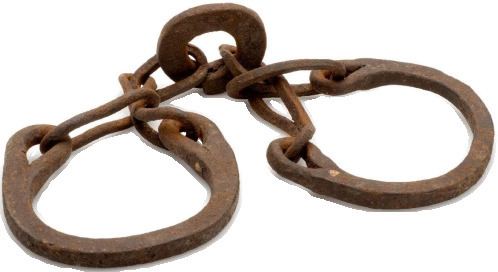 | ||
A History of slavery in Iran during various ancient, medieval and modern periods is sparsely cataloged.
Contents
Under the Achaemenids
In general, mass slavery as a whole has never been practiced by Persians, and in many cases the situation and lives of semi-slaves (prisoners of war) were, in fact, better than those of the commoner.
Slavery was an existing institution in Egypt, Media and Babylonia before the rise of the Achaemenid empire.
On the whole, in the Achaemenid empire, there was only small number of slaves in relation to the number of free persons and moreover the word used to call a slave was utilized also to express general dependence. Usually, captives were prisoners of war that were recruited from those that rebelled against Achaemenid rule.
Modern historians handle the book of Herodotus with care and according to Pierre Briant: "It is hard to separate history from fairy tale in Herodotus". Herodotus has mentioned enslavement with regards to rebels of the Lydians who revolted against Achaemenid rule and captured Sardis. He has also mentioned slavery after the rebellion of Egypt in the city of Barce during the time of Cambyses and the assassination of Persian Satrap in Egypt. He also mentions the defeat of Ionians, and their allies Eretria who supported the Ionians and subsequent enslavement of the rebels and supporting population.
According to Dandamayev:
Under the Parthians
There is evidence from classical sources about the practice of slavery under Parthian rule. According to Plutarch, there were many slaves in the army of the Parthian general Surena.
Under the Sassanids
Under this period Roman prisoners of war were used in farming in Babylonia, Shush and Persis.
Sassanid Laws of Slavery
Some of the laws governing the ownership and treatment of slaves can be found in the collection of laws of the Sassanid period called Matikan-e-Hazar Datastan. Principles that can be inferred from the laws include:
1) The slaves were captured foreigners who were non-Zoroastrians.
2) The ownership of the slave belonged to the man.
3) The owner had to treat the slave humanely; violence toward the slave was forbidden. In particular beating a slave woman was a crime.
4) If a non-Zoroastrian slave, such as a Christian slave, converted to Zoroastrianism, he or she could pay his or her price and attain freedom.
5) If a slave together with his or her foreign master embraced Zoroastrianism, he or she could pay his slave price and become free.
To free a slave (irrespective of his or her faith) was considered a good deed. Slaves had some rights including keeping gifts to them and at least three days of rest in the month. The law also protected slaves, including: No one may inflict upon slaves a fatal punishment for a single crime... Not even the king himself may slay anyone on the account of one crime.
Modern Period
At the beginning of 19th century both white and black slaves were traded in Iran. The 1828 war with Russia put an end to the import of white slaves from the Russian Empire borderlands as it undermined the trade in Circassians and Georgians, which both Iran and neighboring Turkey had been practising for quite some time. At the same time and under various pressures the British Empire decided to curb slave trade through the Indian Ocean. Consequently, by 1870 the trade in African slaves to Iran through the Indian ocean had been significantly diminished. Although the diplomatic efforts of the Russians and the British did result in a decline in the trade, slavery was still common in Iran under the Qajar dynasty and it was not until the first half of twentieth century that slavery was officially abolished in Iran under Reza Shah Pahlavi.
What ultimately led to the abolition of the slave trade and the emancipation of slaves in Iran, was internal pressures for reform. On February 7, 1929 the Iranian National Parliament ratified an anti-slavery bill that outlawed the slave trade or any other claim of ownership over human beings. The bill also empowered the government to take immediate action for emancipation of all slaves.
